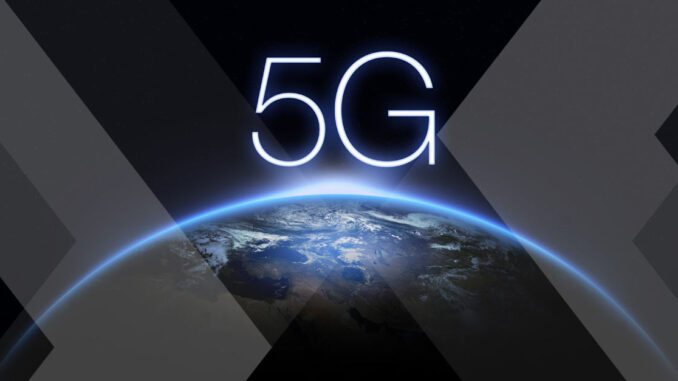
5G technology is set to revolutionize public safety and emergency response systems by providing enhanced connectivity, faster data transfer, and the ability to connect a multitude of devices in real-time.
The integration of 5G capabilities with public safety frameworks can lead to significant improvements in emergency preparedness, response times, and overall community resilience. Here’s an in-depth look at how 5G technology impacts public safety and emergency response:







#### **1. Enhanced Communication**
– **Real-Time Information Sharing**: 5G networks enable seamless communication between first responders (police, fire, medical personnel) and command centers. This ensures that vital information is shared in real-time, allowing for quicker decision-making during crises.
– **High-Definition Video and Data Transmission**: The high speeds and low latency of 5G facilitate the transmission of high-definition video from body cameras, drones, and surveillance systems, enhancing situational awareness for commanders and response teams.
– **Group Communication**: 5G networks support more reliable and robust group communication tools that allow teams to collaborate efficiently, even in high-stress situations.
#### **2. Improved Response Times**
– **Smart Dispatch Systems**: 5G can enhance the capabilities of dispatch systems by providing real-time traffic data, allowing dispatchers to send emergency responders via the quickest route, thus reducing response times.
– **Connected Vehicles**: Emergency service vehicles (ambulances, fire trucks) equipped with 5G can receive data about traffic conditions, accidents, and incidents, enabling dynamic route optimization.
#### **3. Enhanced Situational Awareness**
– **Drones and UAVs**: Drones equipped with 5G capabilities can provide aerial views of disaster sites or accident scenes, relaying real-time data and video feeds to incident commanders. This is particularly useful during large-scale emergencies, natural disasters, or hazardous materials incidents.
– **IoT Sensors**: Connected sensors can monitor environmental conditions (such as air quality during a fire or natural disaster), structural integrity of buildings, or crowd behavior during large gatherings, providing first responders with critical data for assessing emergencies.
#### **4. Advanced Emergency Medical Services (EMS)**
– **Telemedicine**: With low latency, 5G enables ambulance crews to consult with medical professionals in real-time while en route to hospitals. This allows for remote diagnostics and preparations, improving patient care before arrival.
– **Remote Patient Monitoring**: Chronic patients equipped with wearable devices that communicate over 5G can have their health monitored continuously. This data can be sent to medical teams during emergencies, enabling better-tailored interventions.
#### **5. Public Alert Systems**
– **Instant Notifications**: 5G technology supports more robust emergency notification systems that can send alerts, updates, and instructions to residents instantly during crises (e.g., natural disasters, active shooters).
– **Social Media Integration**: Enhanced data speeds will allow for better integration of social media and public platforms to disseminate information, mobilize community response, and gather situational data during emergencies.
#### **6. Smart City Integration**
– **Traffic Management**: 5G technology can support smart traffic systems that prioritize emergency vehicles at intersections and adjust traffic signals based on real-time conditions, clearing paths for responders.
– **Infrastructure Monitoring**: Sensors can be deployed throughout the city to monitor the status of infrastructure (bridges, roads, buildings), providing early warnings of potential issues that could impact public safety.
#### **7. Challenges and Considerations**
While the integration of 5G technology offers numerous benefits for public safety and emergency response, there are challenges to consider:
– **Infrastructure Costs**: Building and maintaining the necessary infrastructure for 5G can be costly, requiring investment from both public and private sectors.
– **Cybersecurity**: As public safety systems become increasingly connected, they may become prime targets for cyberattacks. Ensuring robust cybersecurity measures is essential to protect sensitive data and systems.
– **Interoperability**: Various agencies may use different technologies and systems. Ensuring interoperability for seamless communication and data sharing is critical.
– **Equitable Access**: Ensuring that all communities, particularly underserved areas, have access to 5G technology is vital for equitable public safety.
#### **8. Case Studies and Implementations**
– **Los Angeles, California**: The city has been exploring the use of 5G technology for smart emergency response systems, focusing on improving communication technologies for law enforcement and emergency medical services.
– **New York City, New York**: The NYC Emergency Management Department is integrating 5G capabilities into its emergency response strategies to enhance situational awareness and communication during emergencies.
– **Chicago, Illinois**: The city has invested in connected technology solutions for first responders to improve emergency response times and coordination among agencies using integrated real-time data from various sources.
#### **9. Future Outlook**
The future of public safety and emergency response with 5G technology looks promising. As 5G networks continue to expand:
– **Innovation in Response Techniques**: Expect advancements in the ways emergencies are managed, including more sophisticated data analytics and the use of artificial intelligence to predict and respond to incidents.
– **Greater Community Engagement**: Enhanced communication platforms can foster improved engagement between citizens and emergency services, creating a more connected community that can respond collaboratively in emergencies.
– **More Automated Systems**: Increased automation in dispatching and resource allocation based on real-time data will likely lead to more efficient and effective responses.
### **Conclusion**
5G technology stands to greatly enhance public safety and emergency response capabilities by providing faster, more reliable communication and data-sharing options. Through the integration of connected devices and real-time information systems, emergency responders can improve their situational awareness, reduce response times, and ultimately save lives. However, leveraging these advancements requires mindful attention to infrastructure investments, cybersecurity, and equitable access. As cities and communities continue to evolve, the synergy between 5G technology and emergency services will be crucial in creating safer environments for all.


Leave a Reply